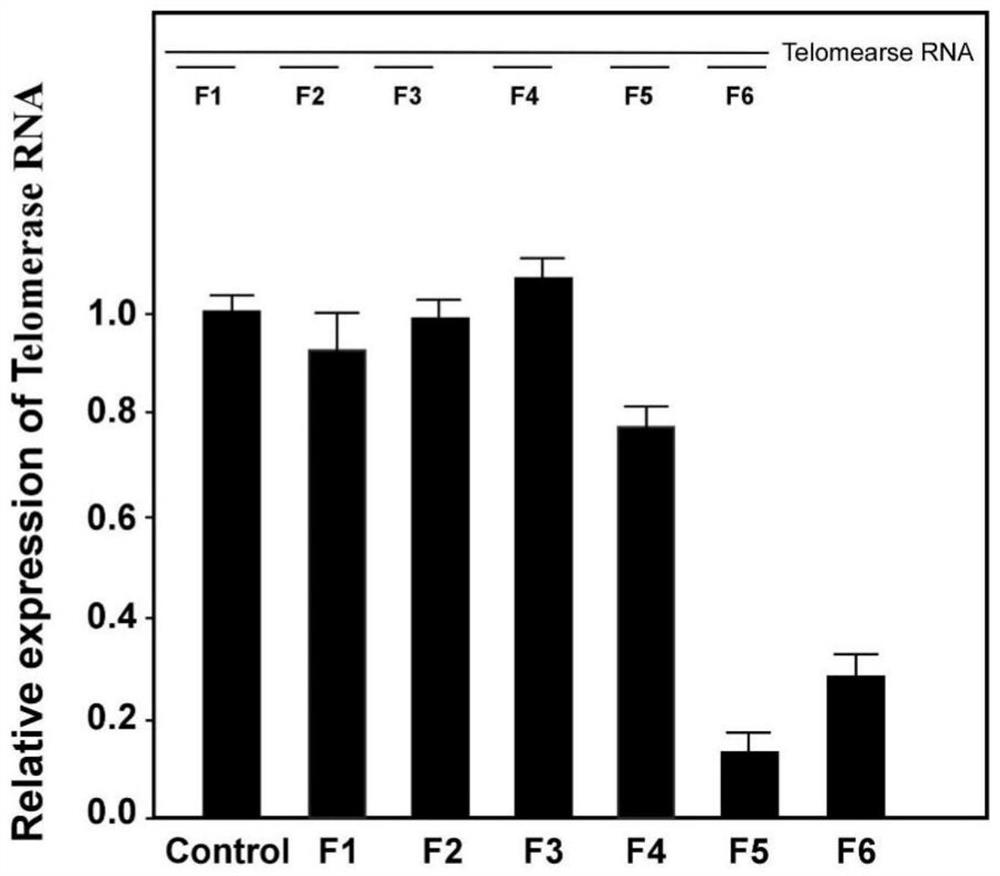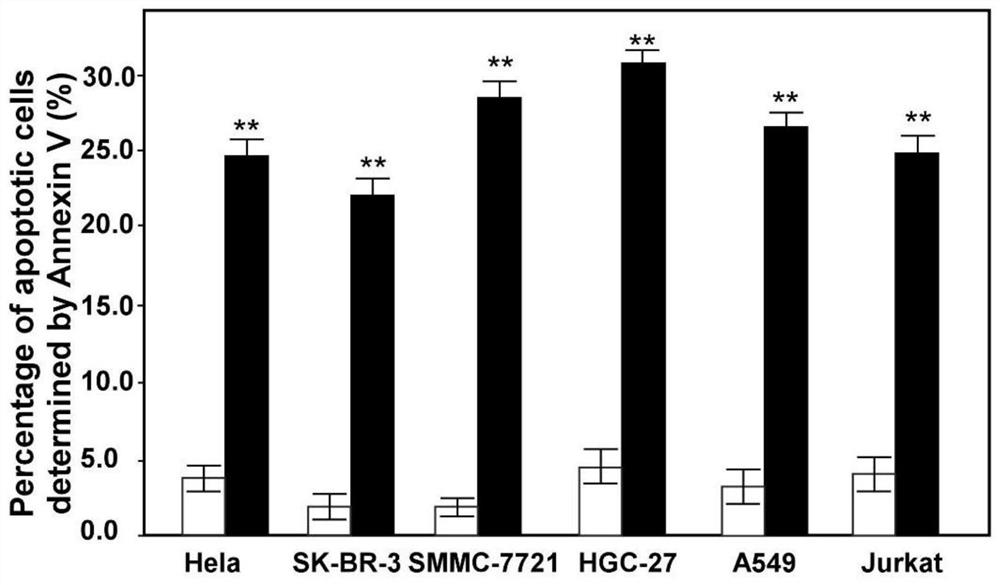Specifically modified deoxynucleotide short chain and application thereof
A deoxynucleotide, specific technology, applied in the field of short deoxynucleotide chains, can solve problems such as lack, and achieve the effect of prolonging the action time and effectively anti-tumor prospects
- Summary
- Abstract
- Description
- Claims
- Application Information
AI Technical Summary
Problems solved by technology
Method used
Image
Examples
Embodiment 1
[0024] We used MGC-803 cells for preliminary research. Cells were seeded in 6-well plates, cultured in DMEM medium containing 10% FBS, transfected when the cells grew to a density of 30%-50%, and preheated at 37°C. - MEM I and medium. Dilute 3 μL Lipo 2000 into 250 μL opti-MEM I, gently pipette evenly, and let stand at room temperature for 5 minutes. Take 2 μL of 100 mM of one of the corresponding F1-F6 fragments, dilute to 250 μL of opti-MEM I, and gently pipette evenly; gently mix the diluted Lipo2000 and antisense nucleotide chains, and let stand at room temperature for 20 minutes. Aspirate the medium of the cells to be transfected in the six-well plate and replace with fresh prewarmed medium. After standing still for 20 min, the mixture was added dropwise into a six-well plate, and 1.5 ml of complete medium was added to make the final transfection concentration of antisense nucleotides 100 nM. The medium was changed after 6 hours, the supernatant was removed after 48 hou...
Embodiment 2
[0027] Select six tumor cells, hela (cervical cancer), SK-BR-3 (breast cancer), SMMC-7721 (liver cancer), HGC-27 (gastric cancer), A549 (lung cancer), Jurkat (leukemia), and transfect them with F5 Into the cells, the cells that were not transfected with any nucleotide short chain were used as the control, and the cells were collected after 48 hours of transfection, and Real-time PCR was used to detect the changes in the content of telomeric RNA in the cells, and the results were as follows: figure 2 as shown, figure 2 The control group is a white column, and the experimental group is a black column. It can be clearly observed that the content of telomeric RNA in each cell is significantly reduced, indicating that F5 has the effect of degrading telomeric RNA in different tumor cells.
[0028] Annexin V detection method of cell apoptosis: trypsinize the cells, do not discard any liquid, 300g, 4 ℃ horizontal centrifugation for 10min to collect the cells. Wash once with pre-co...
Embodiment 3
[0030] A549 (lung cancer) cells were selected, F5 was transfected into the cells, and cells not transfected with any short nucleotide chains were used as a control. Cells were collected 48 hours after transfection, and the key regulatory proteins Caspase 3, Caspase 3, and Expression of p53, Bax, Bcl-2. The result is as Figure 4shown. The results showed that when the telomere RNA in cells was significantly reduced, the expression of apoptosis regulatory proteins changed significantly, and the apoptosis signaling pathway was activated.
PUM
 Login to View More
Login to View More Abstract
Description
Claims
Application Information
 Login to View More
Login to View More - R&D Engineer
- R&D Manager
- IP Professional
- Industry Leading Data Capabilities
- Powerful AI technology
- Patent DNA Extraction
Browse by: Latest US Patents, China's latest patents, Technical Efficacy Thesaurus, Application Domain, Technology Topic, Popular Technical Reports.
© 2024 PatSnap. All rights reserved.Legal|Privacy policy|Modern Slavery Act Transparency Statement|Sitemap|About US| Contact US: help@patsnap.com










